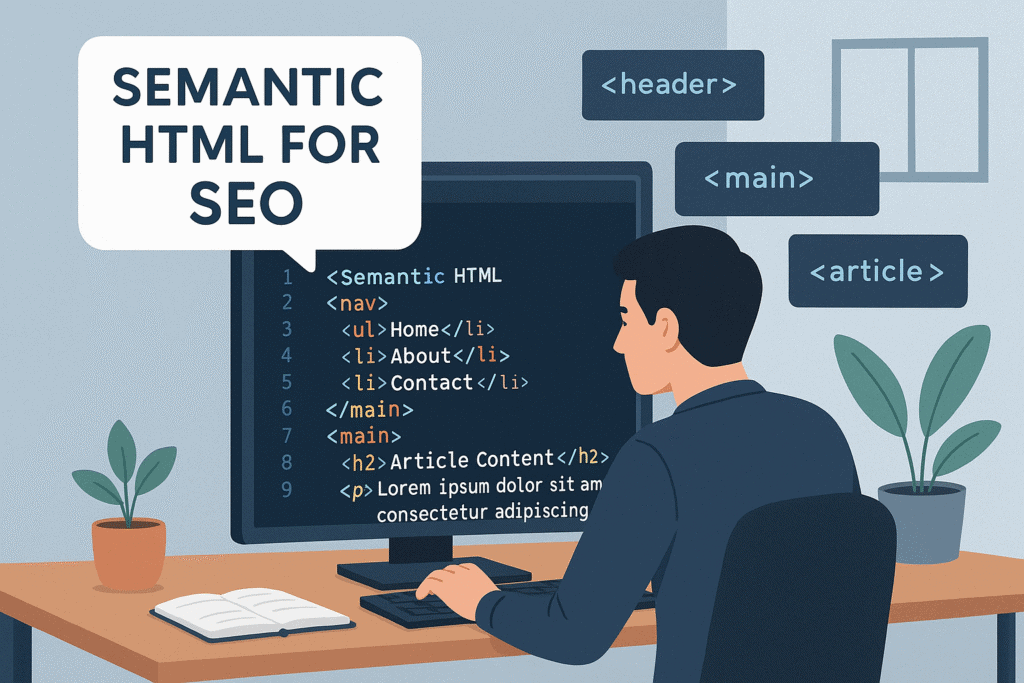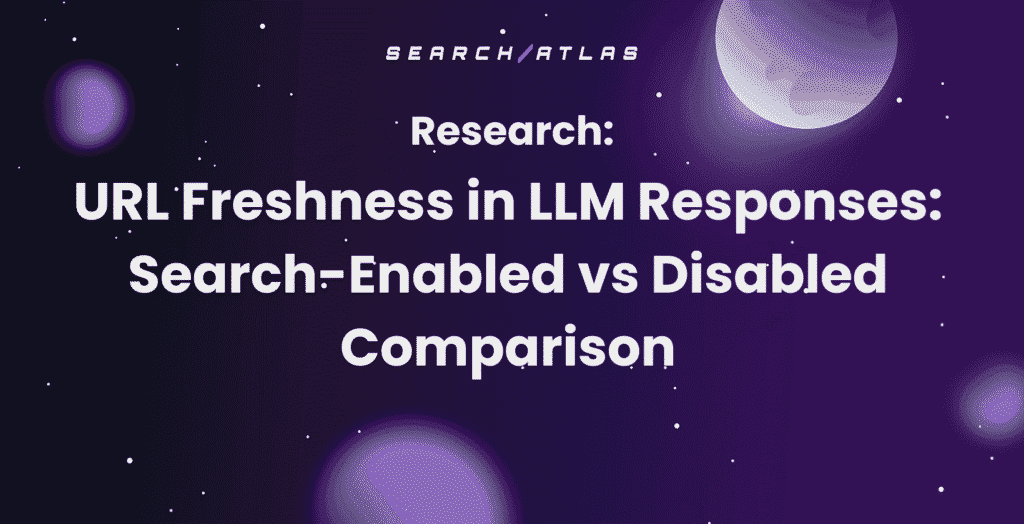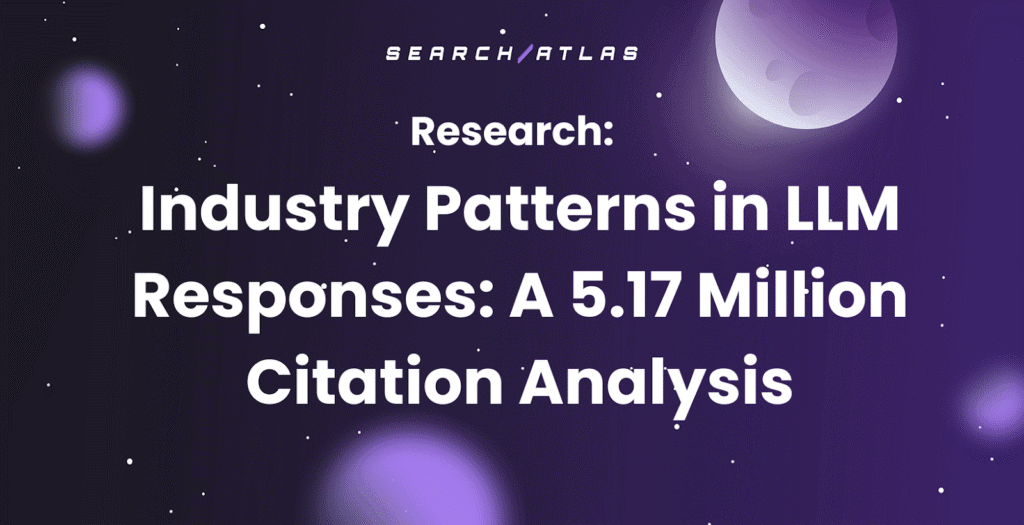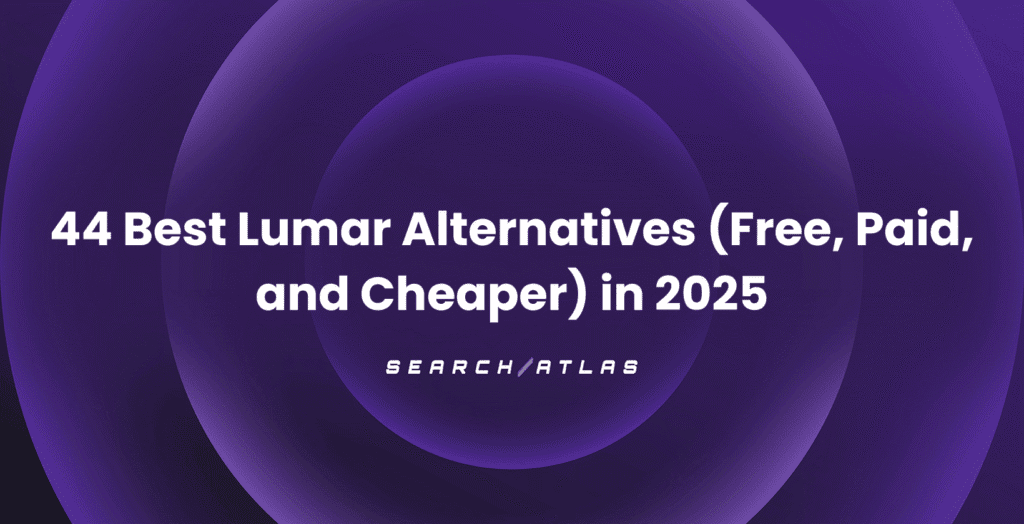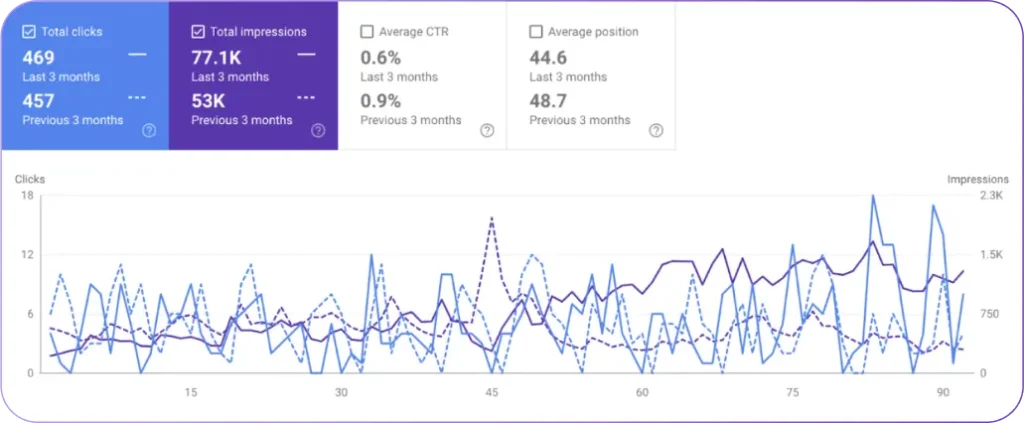In this guide, we’ll compare paid SEO vs organic SEO, show how paid and organic search complement each other, and explain when to lean more on organic search vs paid depending on your goals.
Any digital marketing strategy must decide how to balance paid SEO vs organic SEO. Paid search (PPC) buys visibility through ads and bidding, while organic SEO earns rankings through relevant content, technical optimization, and authority.
In this guide, you’ll learn how paid and organic search work together, when to rely more on organic search vs paid, and how to use AI‑powered automation and LLM Visibility to measure success in 2025. We’ll also show which KPIs matter most and how platforms like SearchAtlas help teams reduce manual work while improving results.
SearchAtlas provides comprehensive tools for optimizing both paid and organic SEO strategies.
What Is the Difference Between Paid SEO and Organic SEO (Paid Search vs Organic Search)?
Paid SEO (paid search, PPC) buys visibility through ads and bidding, while organic SEO earns visibility through content and technical optimization. The core differences between paid SEO vs organic SEO are:
- Placement: paid appears as sponsored ads; organic appears in standard search results.
- Cost: paid requires ongoing media budget (CPC/CPM); organic requires upfront investment in content and technical SEO.
- Speed: paid delivers immediate traffic; organic takes weeks or months but compounds over time.
- Longevity: paid stops when you pause budget; organic pages can keep driving traffic and conversions.
These differences explain why smart teams don’t choose between organic search vs paid, but combine both.
What Is Organic SEO?
Organic SEO, also called SEO orgánico en español, is the process of improving your website so it appears in the unpaid or “organic” search results.
Instead of paying for each click, you invest in:
- High‑quality, helpful content
- Technical SEO (site speed, structure, internal links, schema)
- Authority‑building (digital PR, high‑quality backlinks, brand mentions)
Because of this, many marketers refer to SEO as a form of organic marketing: you attract users naturally through helpful content, not through paid ads.
In marketing terms, “SEO” usually means organic search marketing, while paid marketing in search is handled through PPC or paid search campaigns. When people search for the “SEO meaning organic and paid marketing”, they are really asking how organic search marketing (SEO) differs from paid search advertising (PPC).
Many teams ask, “Is SEO paid or organic?”
SEO is focused on organic visibility. The paid counterpart is usually called paid search, PPC, or paid SEO campaigns that run through platforms like Google Ads.
Paid SEO vs Organic SEO: Side‑by‑Side Comparison
In simple terms, paid SEO vs organic SEO is not about choosing one or the other, but understanding how they differ and how they work together.
| Aspect | Organic SEO | Paid SEO (PPC / Paid Search) |
|---|---|---|
| Traffic source | Unpaid, “organic” search results | Sponsored ads above, below, or alongside organic results |
| Cost model | Investment in content, technical SEO, and authority‑building | You pay per click (CPC) or per impression (CPM) |
| Time to results | Slower (weeks to months), but compounding over time | Immediate visibility as soon as campaigns launch |
| Targeting | Intent‑driven content structured around keywords and entities | Granular targeting by keyword, audience, device, and location |
| Long‑term value | Evergreen assets that can keep driving traffic and conversions | Stops driving traffic when you pause or reduce budget |
| Core KPIs | Rankings, organic sessions, organic conversions, assisted conversions | Impressions, CTR, CPC, conversion rate, ROAS, cost per acquisition (CPA) |
| Best use cases | Long‑term growth, authority, informational and comparison queries | Short‑term campaigns, promotions, rapid testing of new keywords/messages |
When users compare organic search results vs paid results, the main difference is that organic listings are earned through SEO, while paid results are sponsored placements that depend on bids and budgets.
In short, paid SEO vs organic SEO should be seen as a hybrid strategy:
paid search delivers fast data and instant visibility, while organic SEO builds sustainable growth and brand authority.

Many teams ask whether they should focus on organic SEO or paid. In practice, the strongest strategies use both: paid and organic search work together. Paid campaigns validate new keywords and messaging, and then organic SEO turns the top performers into long-term content assets.
In analytics and reports, you may also see phrases like “SEO paid” or “organic search marketing SEO”, but both refer to the same distinction between paid search campaigns and organic SEO efforts.
What Is Organic SEO in Search Results?
Organic SEO focuses on earning visibility in the unpaid, or “organic,” search results by publishing helpful content and optimizing technical performance.
In other words, SEO is an organic marketing channel focused on earning visibility, while paid search buys temporary exposure through ads.
Organic SEO achieves its goals by aligning three core elements:
- Content relevance: matching search intent with well‑structured, semantic content.
- Technical health: fast, crawlable pages with clean architecture and structured data.
- Authority and UX: trustworthy backlinks, strong brand signals, and a smooth user experience.
In practice, this means doing keyword and topical research, creating content that connects to key entities in the knowledge graph, and running regular technical checks to fix crawl and indexing issues. When these fundamentals are in place, search engines can treat your pages as the best answers for important queries, which leads to better rankings and growing organic traffic.
Organic SEO core pillars include:
- The process of optimizing content for user intent through semantic optimization techniques.
- Technical SEO requires organizations to optimize their website speed and ensure proper indexability and implement structured data formats.
- Organizations build their authority through acquiring links and managing their Google Business Profile listings.
- The ranking signals depend on user experience metrics and engagement indicators which search engines use as signals. Organic SEO operates through cumulative processes which require teams to start with essential technical and content improvements that deliver the most significant results before they can see any progress.
What Defines Paid SEO and How Does PPC Advertising Operate?
Paid SEO or PPC advertising is a paid model where you bid on keywords to show ads in search results. Paid SEO campaigns (often called SEO paid campaigns in some reports, PPC) are ideal when you need immediate traffic, want to test new keywords, or support short-term promotions. Paid search advertising works through an auction system that determines ad placement and pricing based on bid amounts, ad quality, and expected performance.
Advertisers can choose between CPC (cost per click) or CPM (cost per impression) models. They create ad content, extensions, and target audiences using keywords, demographics, or remarketing lists to reach immediate demand.
The cost per click depends on quality signals, which determine ad rank and quality score. Businesses need to test ad content and landing pages to improve return on investment.
Paid search works best for urgent results or testing keywords that can later support organic optimization.
Paid search mechanics summarized:
- The placement system operates through an auction process which uses bid amounts and quality scores to determine ranking positions.
- The CPC/CPM budget models create an immediate connection between spending and ad visibility.
- The platform offers multiple ad formats including extensions and shopping and display ads which help users deliver specific messages to their target audience.
- The system provides quick response times which allow users to conduct fast A/B testing and verify their target audience effectiveness.
The system provides exact control but needs continuous budget management and optimization to maintain performance levels.
What Are the Key Benefits and Challenges of Organic SEO vs. Paid Search?
What Are the Benefits of Organic SEO?
The main benefits of organic SEO for businesses are:
- Sustainable traffic growth
Organic pages can keep driving visits and conversions long after they’re published.
- Lower long‑term customer acquisition costs
You don’t pay for each click; instead, you invest in assets that continue to perform. This can lead to 20-50% lower long-term CAC compared to paid-only strategies (source: industry benchmarks from HubSpot).
- Higher trust and click‑through rates
Users often trust organic results more than ads, especially for informational and comparison queries. Organic results typically achieve 2-3x higher CTR than paid ads for top positions (source: Google Analytics benchmarks).
- Compounding visibility across hundreds of keywords
A single high‑quality page can rank for many related organic keywords, not just one paid term.
- Stronger brand authority
Consistently showing up for key topics positions your brand as an expert in your space.
In short, organic SEO creates durable marketing assets, while paid campaigns are powerful but stop working as soon as you pause the budget.
What Are the Long-Term Benefits and Cost-Effectiveness of Organic SEO?
Organic SEO and paid search present different advantages and obstacles which affect their performance based on time requirements and trust levels and operational scale. The selection between these channels depends on specific business targets and available resources and current market conditions. Organic SEO provides enduring website visibility through content authority development at a reduced cost per visitor. Paid search advertising enables businesses to access customers right away through specific audience selection and complete control of their advertising messages. The process of organic SEO needs substantial initial work on content creation and technical optimization which produces results after multiple months. Paid search advertising needs ongoing financial investment to sustain visitor numbers although it becomes expensive when targeting popular search terms. The following two sections analyze organic SEO long-term advantages and paid search immediate benefits to help teams evaluate their expected return on investment and time requirements.
What Are the Advantages and Limitations of Paid Search?
Paid search enables businesses to reach users who are searching for specific keywords at the exact moment they need it for promotions and new product launches and time-sensitive offers. The platform enables advertisers to target specific audience segments based on their search intentions and their device usage and location and demographic characteristics. The platform provides instant performance metrics including CTR, conversion rates, and profitability, which enables teams to test keyword effectiveness and messaging through SEO A/B testing before investing in large-scale organic content development. The continuous need for budget allocation and optimization in paid search exists while competitive keywords drive up costs through high CPCs unless conversion routes receive proper optimization. The following section demonstrates specific methods to merge paid search with organic search for enhanced results.
Instant advantages of paid search:
- Immediate visibility for targeted queries and promotions.
- Precise audience and keyword targeting for efficient testing.
- Rapid data generation to inform organic strategy and creative.
Paid search excels when speed, control, and measurable short-term outcomes are top priorities.
How Can Paid and Organic SEO Work Together for Maximum Search Visibility?
The combination of paid and organic search marketing creates a feedback system which uses paid campaigns to discover new keywords and test creative elements while organic content generates enduring cost-efficient traffic. The complete buyer journey receives support from this integrated method which uses paid channels to generate awareness and conversions during the top and mid-funnel stages and organic content to drive discovery and retention through authoritative resources. Organizations should use paid data to select organic content priorities and organic search positions to minimize paid advertising expenses for established search terms which results in better operational performance and market dominance. The following sections explain the necessity of strategy unification and demonstrate how paid data enables organic content optimization.

Why Should Businesses Combine Paid and Organic Search Strategies?
Organizations that use paid and organic marketing together achieve immediate performance results and sustainable business stability because paid search controls visibility during urgent moments and organic SEO provides lasting reach and credibility that minimizes future advertising needs. The combination of channels helps businesses protect themselves from risks because organic traffic maintains stability when paid advertising expenses rise and brands achieve complete market dominance through both paid and organic search placement. A combined strategy enables businesses to run structured experiments, including SEO A/B testing: advertisers can test different messages in paid channels and then use winning creative elements to enhance organic click-through rates. The following section demonstrates how paid search metrics enable organizations to enhance their organic search operations.
Reasons to combine channels:
- Complementary strengths across speed and sustainability.
- Risk mitigation when one channel faces cost or volatility.
- Enhanced share of voice by occupying both ads and organic listings.
These benefits justify integrated planning and cross-channel reporting to guide budget decisions.
Real-World Examples of Paid and Organic Synergy
E-commerce brands often reduce CPC by 20-30% by investing in organic SEO for top paid keywords. For example, a retailer targeting “running shoes” in paid ads can create organic content like “best running shoes for beginners” or “running shoe reviews,” earning organic rankings that lower paid competition and build long-term traffic.
SaaS companies can shift budget to organic for high-intent terms like “best CRM software.” By producing in-depth guides and case studies, they complement paid campaigns, often boosting overall conversions by 15-25%.
Strategic Budget Allocation Between Paid and Organic
When to shift 10-20% of paid budget into organic initiatives for proven keywords: Once paid keywords show consistent ROAS >3x and organic difficulty is moderate (under 50), reallocate funds to content creation. This compounds value, as organic traffic reduces long-term CAC.
SearchAtlas offers an integrated approach for teams that want to operationalize this synergy: by unifying paid and organic workflows, automation reduces manual handoffs and speeds insight-driven decisions. SearchAtlas’s AI capabilities help export paid keyword performance into content priorities, speed technical fixes through automated audits, and coordinate GBP optimizations for local overlap—creating a seamless loop between paid tests and organic implementations.
SearchAtlas helps businesses maximize the benefits of organic SEO through automated tools and expert strategies.
The integration of AI into digital marketing is a significant trend, enhancing competitiveness for e-commerce businesses.
Recent academic research on AI-powered SEO and digital marketing in e-commerce shows that machine learning, NLP, and predictive analytics are transforming how brands handle search visibility, personalization, and customer engagement across the entire funnel.
How Does Paid Search Data Accelerate and Inform Organic SEO Efforts?
Paid search generates immediate performance indicators through high-CTR keywords and converting queries and ad copy variants which help organic teams understand actual user behavior and important search terms. The extraction of successful paid search queries enables content development and optimization while ad copy winners help improve meta titles and descriptions and audience segments guide content personalization and topic cluster development. The conversion data from paid campaigns reveals successful landing pages which organic teams can replicate through intent matching and improved website user experience. The validation of keyword demand through paid testing allows organizations to shift their resources toward organic content creation which decreases acquisition expenses while maintaining proven messaging strategies.
Tactical steps to use paid data for organic:
- Prioritize content creation for high-converting paid keywords.
- Apply ad copy insights to meta titles and headings to improve organic CTR.
- Use audience segmentation from paid campaigns to tailor content personas.
These practices accelerate organic wins by leveraging the rapid learning loop of paid experimentation.
Organic Keywords vs Paid Keywords and Research Tools
Organic Keywords vs Paid Keywords
Organic keywords are the search terms that bring users to your site through unpaid (organic) search results. When someone types a query into Google and clicks on a non‑ad result, that traffic is driven by organic keywords.
Paid keywords are the queries you bid on in PPC platforms like Google Ads to trigger your ads in the sponsored sections of the SERP. Each click or impression is associated with a specific bid, budget, and campaign.
Although they are based on the same user intent, organic keywords vs paid keywords differ in several important ways:
- Placement in the SERP:
- Organic keywords earn visibility in classic blue‑link results, rich snippets, and other organic features.
- Paid keywords trigger ad placements above, below, or alongside organic results.
- Cost model:
- Organic keywords do not incur a direct cost per click. You invest in content, technical SEO, and authority‑building.
- Paid keywords use CPC or CPM models, where each click or impression has a direct media cost.
- Time horizon:
- Organic keywords are typically a long‑term investment that compounds over months and years.
- Paid keywords can deliver immediate traffic as soon as your campaign is live and funded.
- Testing speed:
- Organic SEO tests take time to show results as pages are crawled, indexed, and ranked.
- Paid search allows rapid A/B testing of new keywords, creatives, and landing pages.
Understanding the difference between organic keywords vs paid keywords helps teams decide which terms to pursue with long‑term content and which topics warrant short‑term paid support or always‑on PPC coverage.
What Is the Difference Between Paid and Organic Keyword Research Tools?
Many teams also ask, “What is the difference between paid and organic keyword research tools?”
Organic keyword research tools focus on:
- Search volume and seasonality for organic queries
- Keyword difficulty and competitive landscape in organic SERPs
- SERP features (featured snippets, People Also Ask, local packs, etc.)
- Related topics and entities for building topical authority
- On‑page optimization opportunities (titles, headings, internal links)
These tools help you plan and optimize content that can rank in organic search and attract unpaid traffic over time.
Paid keyword research tools add another layer of data:
- Bid ranges and estimated CPCs for each keyword
- Advertising competition and auction insights
- Predicted click‑through rates for ads
- Quality Score factors and landing page experience
- Forecasts for impressions, clicks, and conversions at different budget levels
These tools are designed to build profitable PPC campaigns, prioritize spend, and manage return on ad spend (ROAS).
Modern platforms like SearchAtlas combine both views so marketers can:
- Use paid keyword data (CPC, conversion rate, ROAS) to prioritize high‑value topics for organic SEO content.
- Identify organic winners and then support them with paid search to dominate high‑intent SERPs.
- Compare performance across organic keywords vs paid keywords in a single reporting environment.
How Does SearchAtlas Automate and Integrate Paid and Organic SEO?
SearchAtlas operates as an AI-based automation system which unifies essential paid and organic operations to minimize human work and accelerate results. The OTTO suite of SearchAtlas includes OTTO SEO which performs technical audits and content optimization and link building and GBP management tasks while OTTO Google Ads handles campaign creation and bid optimization and creative testing. The SearchAtlas platform includes LLM Visibility tracking which tracks brand visibility in AI-generated responses and an integrated reporting system that shows combined paid and organic performance data. The platform enables teams to automate most regular tasks which enables them to move from task-based work to strategic planning and continuous improvement. The following H3 sections describe the features and advantages of OTTO SEO and OTTO Google Ads.
How Does OTTO SEO Automate Organic SEO Tasks and Improve Rankings?
The OTTO SEO platform performs automated organic work including technical site assessments and content enhancement recommendations and internal link optimization and Google Business Profile maintenance to allow teams focus on essential tasks. The system detects crawl errors while helping users fix them first and providing content enhancement recommendations through semantic analysis to enhance both remediation speed and target query relevance. The automation system helps link building operations and detects ways to transform successful paid tests into enduring content assets which boost search engine rankings within short timeframes of days or weeks instead of months. The platform delivers its value by minimizing human tasks while delivering quick results through automated processes that maintain essential SEO team strategic control.
What Are Organic SEO Services?
Organic SEO services include everything required to improve your visibility in unpaid search results: technical site audits, keyword and topical research, content strategy, on-page optimization, internal linking, and authority-building through digital PR and link acquisition.
In other words, when businesses ask, “What are organic SEO services?”, they are referring to the mix of technical, content, and authority‑building activities that improve unpaid visibility in search engines.
With SearchAtlas and OTTO SEO, brands can automate many organic SEO services such as technical audits, content optimization, internal linking, and Google Business Profile updates. If you want to learn more, explore our enterprise organic SEO services (https://searchatlas.com/organic-seo-services) for details. These solutions connect directly to performance metrics and business outcomes.
SearchAtlas offers comprehensive organic SEO services to help businesses achieve sustainable growth through improved search rankings.
| Product | Feature | Benefit |
|---|---|---|
| OTTO SEO | Automated technical audits and prioritized fixes | Faster remediation of crawl/index issues and improved site health |
| OTTO SEO | Content optimization and internal linking recommendations | Improved relevance and higher chance of ranking for target keywords |
| OTTO SEO | GBP management automation (local optimization) | Better local visibility and streamlined profile updates |
How Does OTTO Google Ads Automate Paid Search Campaigns for Better ROI?
The OTTO Google Ads platform enables paid search acceleration through automated campaign creation and keyword selection and ad copy generation and bid optimization which allows teams to launch and refine their campaigns at higher speed with reduced manual work. The system operates continuously to evaluate creative elements and modify bidding strategies based on artificial intelligence-generated performance indicators which enhance return on ad spend (ROAS) while simplifying campaign organization and expanding reach to different market segments. The OTTO Google Ads platform enables advertisers to establish campaigns quickly while its optimization system runs continuously to boost ROAS through AI-based signal analysis and creative testing and bid adjustments. The platform delivers automated paid workflow management through its ability to enhance campaign performance within short timeframes of days or weeks through specific AI-based optimization.
| Product | Feature | Benefit |
|---|---|---|
| OTTO Google Ads | Automated campaign creation and keyword selection | Quicker launch of targeted campaigns with validated keyword sets |
| OTTO Google Ads | AI-driven bid optimization and creative testing | Improved ROAS through continuous performance tuning |
| OTTO Google Ads | Ongoing campaign monitoring and adjustment | Reduced manual management time and faster reaction to market changes |
What Metrics Should You Use to Measure Success in Paid and Organic SEO?
To evaluate combined paid and organic performance, you need two types of KPIs:
Channel‑specific metrics for organic and paid Blended metrics that show total market presence, conversion efficiency, and incremental value
Which KPIs Are Essential for Tracking Organic SEO Performance?
Organic performance tracking requires metrics that demonstrate user interaction and visibility levels. These include keyword ranking, visibility share, organic sessions, CTR, and engagement metrics like time-on-page and bounce rate. The channel’s multi-touch path contribution becomes clear through organic conversion tracking and assisted conversion measurement. The observation of cumulative improvements becomes possible through regular monitoring of these metrics at weekly and monthly intervals. The main goal for benchmarking should focus on industry-specific trends while monitoring how content and technical improvements affect visibility and conversion rates. The selected KPIs determine when to expand content production or when to focus on technical system fixes.
| Channel | Metric Category | Typical KPIs |
|---|---|---|
| Organic | Visibility & Reach | Keyword rankings, search visibility (impressions) |
| Organic | Engagement | Organic sessions, CTR, time on page, bounce rate |
| Organic | Conversion | Organic conversions, assisted conversions, conversion rate |
Monitoring these metrics monthly and quarterly provides the right balance between detecting trends and avoiding reactionary optimization.
What Are the Key Metrics for Evaluating Paid Search Campaigns?
The success of paid search campaigns depends on a few core performance indicators:
Impressions and clicks to measure reach CTR to evaluate ad relevance CPC and cost‑per‑acquisition (CPA) to track efficiency Conversion rate and ROAS to assess profitability Teams need to check Quality Score and conversion rate optimization levers daily to weekly for active campaigns because these factors affect CPC and total cost efficiency. Paid metrics need to connect with organic results because paid keywords that generate high performance can become targets for organic content funding to reduce future acquisition expenses. The following list presents essential paid KPIs along with their application methods.
Core paid search KPIs:
- Impressions, clicks, and CTR to assess visibility and relevance.
- CPC and cost per acquisition to measure efficiency.
- Conversion rate and ROAS to determine profitability.
The combination of paid KPIs with organic performance data through unified dashboards enables organizations to understand complete channel performance and make better budget decisions.
Once you understand the core differences and how to combine paid and organic SEO, the next step is to choose the right tools and KPIs to manage both channels at scale.
Which Solutions Combine Paid, Organic, and AI Insights, and Which KPIs Should Executives Track?
SearchAtlas is an AI-powered platform that combines paid, organic, and LLM Visibility insights in a single unified dashboard. OTTO SEO automates organic tasks, OTTO Google Ads optimizes paid campaigns, and LLM Visibility tracks how often your brand appears in AI-generated answers.
Executive KPIs
- Blended CAC (paid + organic).
- Marketing Efficiency Ratio (MER): revenue / total media spend.
- Share of Voice across paid ads, organic results, and AI answers.
- Pipeline and revenue attributed to organic + paid touchpoints.
- Trend of organic vs paid contribution to conversions.
For executives, the key is not to look at paid and organic in silos, but to track blended KPIs such as total conversions, blended CPA, and share of voice across paid, organic, and AI results.
Which Solutions Combine Paid, Organic, and AI Insights?
Modern search does not live in separate silos of “SEO” and “PPC.” Executives increasingly need integrated views that combine organic search, paid search, and AI‑powered insights.
SearchAtlas is designed as an AI‑driven solution that combines paid, organic, and LLM visibility data in a single platform:
- OTTO SEO automates and scales organic SEO tasks such as content optimization, internal linking, and technical audits.
- OTTO Google Ads optimizes paid search campaigns with AI‑assisted keyword targeting, bid management, and creative testing.
- LLM Visibility tracks how often your brand and content appear in AI‑generated answers, large language models, and other emerging search surfaces.
By bringing these signals together, teams can see:
- Which keywords and pages drive results in both organic and paid search
- Where to shift budget between paid and organic to improve efficiency
- How often their brand is surfaced in AI‑assisted search experiences
Which KPIs Should Executives Focus On?
At the executive level, it is not enough to look at SEO and PPC metrics in isolation. The most effective leaders track blended KPIs across paid, organic, and AI‑assisted search.
Key KPIs for executives include:
- Blended customer acquisition cost (CAC):
Total acquisition cost across paid and organic divided by total new customers, not just channel‑specific CAC. - Marketing efficiency ratio (MER):
Total revenue divided by total media spend, across all paid campaigns, supported by organic traffic. - Share of voice across paid, organic, and AI:
The percentage of visibility your brand holds in:- Paid ad impressions for your core keyword set
- Organic rankings and traffic for those same topics
- LLM and AI answer presence where your brand or content is cited
- Pipeline and revenue influenced by search:
Opportunities and closed‑won revenue where organic or paid search were part of the journey. - Channel mix trends over time:
The relative contribution of organic vs paid search to total conversions and revenue, as well as how AI surfaces impact overall discoverability.
For executives, the priority is to understand how paid SEO, organic SEO, and AI‑driven visibility work together to:
- Grow total qualified traffic
- Improve overall conversion and revenue
- Reduce blended CAC and improve long‑term marketing efficiency
Rather than asking “Which is better, paid or organic?”, leadership teams should ask, “How can we orchestrate paid, organic, and AI‑powered search to deliver the best business outcomes?”
A balanced search strategy combines organic SEO with targeted paid campaigns so brands don’t have to choose between organic or paid.
SearchAtlas integrates paid and organic SEO data to provide actionable insights for executive decision-making. It enables users to generate unified reports that combine paid and organic channel data, tracks LLM Visibility to assess how brands appear in AI-generated responses, and provides a unified dashboard for linking paid advertising expenses with organic search discoveries, budget adjustments through AI-based visibility trend analysis, and real-time performance data.
What Is the Future of Paid and Organic SEO with AI and LLM Visibility?
AI and large language models are changing how search answers are generated and how users discover brands. As a result, marketers must adapt their content, SEO, and paid strategies to new AI‑driven discovery surfaces.
The rise of LLM Visibility means teams also need to monitor how often their brand appears in AI‑generated responses and answer sections that bypass traditional organic results. The combination of automation with predictive analytics allows marketers to test content and bidding strategies at increased speed. Semantic optimization also gains importance, as AI systems focus on understanding entity connections and contextual information. The following section examines AI search transformations before explaining LLM Visibility and its effects on discovery and strategic planning.
How Is AI Transforming Paid and Organic Search Strategies?
AI systems enhance content production and campaign improvement through automated execution of repetitive tasks. This includes content generation, bid optimization, and predictive audience identification, allowing teams to focus on advanced strategic work and testing.
Generative models and machine learning algorithms enable the creation of audience-specific content and ads, while optimizing bid settings and creative combinations for better return on ad spend.
Predictive analytics generate future keyword patterns and content potential, enabling faster transitions between testing and expansion phases.
AI automation in SEO speeds up manual audits, leading to quicker fixes and measurable improvements within weeks instead of months.
AI-driven changes include:
- Generative content that speeds content production and variant testing.
- Automated bid and creative optimization for continuous paid performance gains.
- Predictive analytics that identify emerging queries and topic clusters.
Frequently Asked Questions about Paid SEO and Organic SEO
Is SEO paid or organic?
When most marketers say “SEO,” they are talking about organic SEO—earning visibility in the unpaid search results through content, technical optimization, and authority building.
Paid visibility in search (through Google Ads or similar platforms) is usually called paid search, PPC, or sometimes “paid SEO,” but it relies on ads and bidding instead of organic rankings.
Is SEO considered organic marketing?
Yes. SEO is typically classified as organic marketing because you do not pay for each click or impression.
With organic SEO, you invest in content, site structure, and authority so that search engines recognize your pages as the best answers for specific queries. This is why some teams describe SEO as “organic search marketing”.
What is organic SEO?
Organic SEO (also called SEO orgánico in Spanish) is the process of improving your website so it ranks in the unpaid or “organic” search results.
It focuses on:
- Creating relevant, high‑quality content around core topics and keywords
- Optimizing technical elements (crawlability, speed, internal links, structured data)
- Building authority and trust through links and brand signals
Unlike paid search, you don’t pay per click. Instead, you build assets that can generate traffic and conversions over the long term.
Because of this, organic SEO is often called organic search marketing: it uses content and technical improvements instead of media budgets to capture demand in search.
What are organic SEO services?
Organic SEO services are the activities and deliverables that help a site grow its unpaid search visibility. They usually include:
- Technical SEO audits and implementation
- Keyword and topic research
- Content strategy and on‑page optimization
- Internal linking and information architecture
- Link acquisition and digital PR
- Local SEO (e.g., Google Business Profile optimization)
Platforms like SearchAtlas and tools such as OTTO SEO help automate many of these organic SEO services at scale.
What are the benefits of organic SEO compared to paid ads?
The main benefits of organic SEO compared to paid ads are:
- Long‑term value: Content and technical improvements can generate traffic for months or years.
- Lower marginal cost: You don’t pay for each click; cost per acquisition typically decreases over time.
- Higher trust and CTR: Many users skip ads and prefer to click organic results.
- Brand authority: Consistent organic visibility builds expertise and credibility in your niche.
Paid search is ideal for fast testing and short‑term campaigns, while organic SEO compounds value over the long run.
What is the difference between organic keywords and paid keywords?
Organic keywords are search terms that bring users to your site through unpaid search results.
Paid keywords are the terms you bid on in platforms like Google Ads to trigger your ads.
Key differences between organic keywords vs paid keywords include:
- Placement: Organic keywords drive visibility in the main results; paid keywords trigger sponsored ad placements.
- Cost: Organic traffic is earned through SEO work; paid traffic requires ongoing budget per click or impression.
- Speed: Paid keywords can deliver immediate traffic; organic keywords may take weeks or months to rank.
Many teams use paid keyword data (CPC, conversion rate) to decide which organic keywords are most valuable to target with content.
When you compare organic search results vs paid, organic keywords are the terms that earn unpaid listings, while paid keywords trigger ads for those same queries.
What is the difference between paid and organic keyword research tools?
Organic keyword research tools focus on helping you plan content and SEO strategy. They typically show:
- Search volume and trends
- Keyword difficulty and competitive landscape
- SERP features and intent
- Related topics and entities
Paid keyword research tools add data that is specific to ad auctions, such as:
- Estimated CPC and competition in the ad auction
- Impression share and click‑through rate predictions
- Budget scenarios and bid recommendations
Modern platforms like SearchAtlas combine both views so you can use paid keyword data to prioritize organic content and use organic insights to refine your paid campaigns.
How should businesses combine paid and organic search?
The most effective strategies treat paid and organic search as complementary, not competing, channels:
- Use paid search to test new keywords, messaging, and landing pages quickly by running controlled experiments such as SEO A/B testing.
- Invest in organic SEO for the terms that show strong performance and long-term business value.
- Share insights between teams so organic content, paid campaigns, and even AI search visibility reinforce each other.
This combined approach improves total reach, stabilizes acquisition costs, and helps you dominate more of the SERP for your most important queries.
Which KPIs should executives focus on when combining paid, organic, and AI insights?
Executives should look beyond channel‑level metrics and focus on blended performance across paid, organic, and AI‑driven visibility. Key KPIs include:
- Total conversions and revenue from all search channels
- Blended CAC or CPA (across paid and organic together)
- Marketing Efficiency Ratio (MER): revenue divided by total media spend
- Share of Voice across paid ads, organic results, and AI‑generated answers
- Pipeline and revenue influenced by search (both paid and organic touchpoints)
Solutions like SearchAtlas, OTTO SEO, OTTO Google Ads, and LLM Visibility centralize these insights so leaders can see the full impact of search on growth.
These innovations require new measurement approaches and stronger cross-channel orchestration to capture their full value.
In other words, when executives ask “which solutions combine paid, organic, and AI insights, and which KPIs should we focus on?”, the answer is to use an integrated platform like SearchAtlas and track these blended KPIs rather than siloed channel metrics.
What Is LLM Visibility and Why Is It Important for Search Success?
LLM Visibility describes how brands appear in answers that large language models and AI agents produce instead of traditional search engine result page links. The tracking of LLM Visibility becomes essential because AI-generated answers affect user discovery differently than traditional organic search results. They also impact brand name appearances and website traffic patterns. Teams need to monitor LLM presence to develop content formats and structures. They should also focus on entity coverage strategies that enhance the chances of AI answer citations and maintain search surface visibility. Marketers who combine LLM metrics with unified reporting can enhance their paid creative. They can also optimize organic content to reach users who now depend on artificial intelligence responses.
| Focus Area | Definition | Strategic Implication |
|---|---|---|
| LLM Visibility | Presence in AI-generated answers and agent responses | Adjust content structure and entity coverage to be cited by AI |
| AI-driven Optimization | Automated content and bid adjustments using ML | Faster iteration and improved performance with less manual work |
| Unified Measurement | Combined paid + organic + LLM metrics | Better allocation of budget and content resources across channels |
SearchAtlas enables teams to prepare for future requirements through its automated system which combines LLM Visibility tools. The combination of OTTO SEO and OTTO Google Ads automation tools with LLM Visibility tracking enables teams to perform routine tasks automatically while they concentrate on developing strategies and creating unique content. SearchAtlas enables teams to adapt faster to AI-based search behavior changes through its automated manual SEO task processing and its ability to deliver speed improvements within days or weeks.
Organizations that want to enhance their paid and organic workflow integration and track contemporary visibility metrics should consider an AI-focused platform which combines audit capabilities with campaign automation and LLM Visibility monitoring for enhanced search performance.
In summary, paid SEO vs organic SEO is not a binary choice. Teams that integrate both channels and add AI‑driven insights tend to achieve faster learning, lower blended CAC, and stronger brand visibility across classic SERPs and LLM-powered experiences.
SearchAtlas provides expert guidance on choosing between paid and organic SEO strategies based on your business goals and budget.




